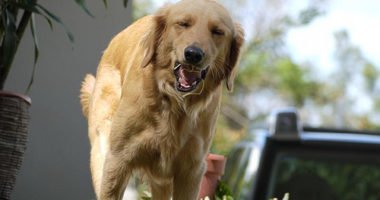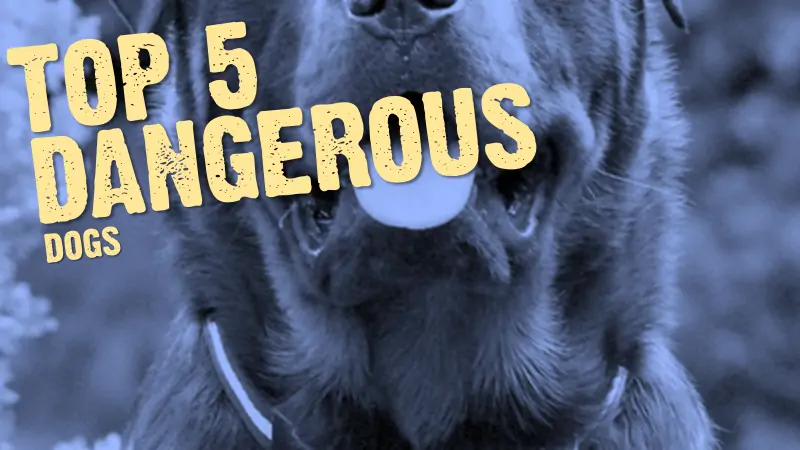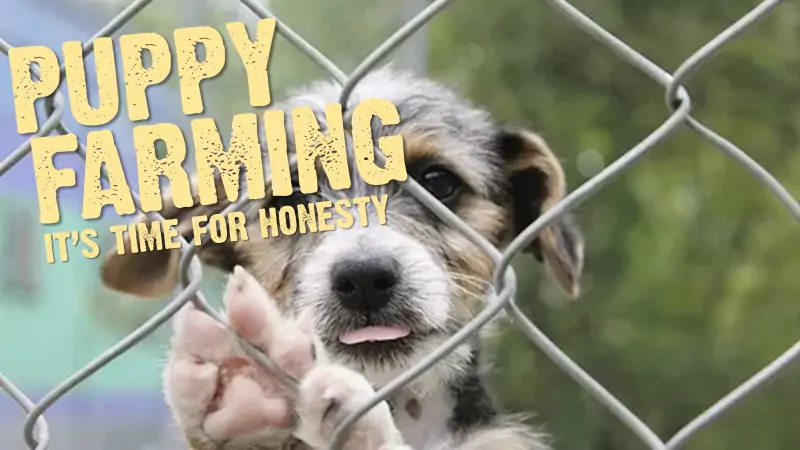Dogs that chase cars endanger their own lives and those of motorists. As bad dog behaviour goes, car chasing dogs are just about at the top of the dangerous league. So, for owners of dogs that chase cars – how can they be cured?
In the Italian Job the car chase was thrilling to watch and goes down in cinematic history as one of the most famous scenes ever to appear on the silver screen.

Whilst our dogs can’t be accused of being influenced by the movies they see, some of them seem far too keen to experience the thrill of the car chase.
Dog’s have an in-built instinct to chase things that move. They are predatory animals who have never lost their desire to give chase whenever the opportunity presents itself.
Dogs all have their favourite quarry, for some it’s squirrels, cats, rats, ducks, pigeons, other dogs or basically any furred or feathered creature capable of movement. The behaviour can be overcome fairly easily but in many cases this chasing habit is not regarded as a particularly big deal by the dog’s owner as the chases usually take place in the garden or countryside and more often than not ends in no success for the dog leaving no lasting damage to hunter or hunted. The same can’t be said of a dog with a desire to pursue cars as their quarry of choice and action to remedy the problem is essential.
Some time ago it was decided that in countries where rattlesnakes or porcupines were resident it would make sense to ‘educate’ the dogs that shared the same environment that these animals posed a clear and present danger BEFORE an accident happened.
After all, if a dog was to learn by itself that the noise emitting from a rattlesnake’s tail was a danger sign, it would usually be of little value as the dog would likely be dead within a few minutes of making the discovery. Therefore the idea that it was prudent to show dogs that rattlesnakes are not to be teased, played with or pursued in anyway resulted in the invention of the electric remote dog training collar.
Before we continue it’s worth noting that this feature is not promoting or denigrating the use of the e-collar, the aim is to impart one single message; To truly ensure a car chasing dog is cured of the urge to chase he/she needs to be taught in no uncertain terms that moving cars are equally as dangerous as a rattlesnake.
The first piece of advice for the owner of a ‘chaser’ is:
1) Until the dog is properly cured, never allow them off the lead where the opportunity to give chase can arise.
You are going to need a controlled, contrived setting to correct the problem of the car chase. You will need a friend to help and of course, a car.
But before all that some basic training applies. Teaching your dog not to chase cars begins with teaching your dog not to chase anything. It’s actually not a specifically difficult discipline to master. Gundogs working in the field are taught to sit deadly still despite hundreds of shots being fired and game falling all around them ten to the dozen. NEVER could the desire to chase be as strong as it is in a working gundog when the very quarry they were born to pursue is literally falling out of the sky all around them yet they are trained to remain routed to the spot.
‘Steadying’ a dog involves keeping them on a lead and throwing objects which they would normally run after. Give the dog the command to sit while he or she is on the lead, throw an object a good distance out in front of you, don’t say anything other than to turn sharply and walk in the opposite direction. If the dog pulls after the object issue a firm ‘heel’ command.
The more you practice this the more the dog will become familiar with the concept that they can not chase as and when they feel like it and in fact they can’t chase at all if you are telling them to walk at heel.
Gradually progress this to the stage where you have a friend really ‘tease’ the dog with a moving object, maybe even something tied on a long rope which can be dragged in front of the dog and jerked around in a motion that will make the dog ‘wild’ to chase. You simply issue the heel command and make sure the dog complies by firmly walking in the opposite direction, turning again to walk towards the object but holding control over the dog so they don’t pull towards it – the dog’s attention should be on you and you should not fall into the trap of issuing lots of commands or confusing the dog, a firm heel backed up with a positive motion to walk is enough –
Quick Tip: NEVER allow the dog to catch or give successful chase to the ‘teaser’ object. This will set you back in your training and you must ensure that you have enough physical control over the dog to guarantee they can’t reach the thrown object or pull rope.
Once you are happy that the dog is fully aware that chasing is not the done thing you move to the next stage which involves sitting the dog in front of you – still on the lead – and throwing an object behind you. You should be in a position to ‘block’ the dog with your body should he/she decide to chase. Progress this stage by allowing the lead to dangle free so the dog is essentially ‘able’ to chase if they elected to, you are still in front of them so be prepared to move quickly and issue a very firm ‘NO’ should they give chase. The lead remaining on the dog is almost like a safety valve, most dogs know exactly when their lead is on and when it is off. Moving to the stage when the lead is off means you must be totally happy that you can throw an object behind you and the dog will not even attempt to chase.
Moving the steadiness training further on involves being able to throw objects in front of you, behind you at any height, at any speed and without the dog even knowing you are about to throw.
Quick Tip: Walk with your dog on the lead out side in a place where the dog is not used to. Secretly have a tennis ball in your pocket, don’t let the dog know you’ve got it and during the walk fling the tennis ball in front of the dog from an angle they don’t see coming. No doubt the dog will be a little startled as well as wanting to pursue – you should be ready for this and instantly turn on your heels and walk the other way as you did when you first started the steadiness training. These exercises should ALWAYS end in you collecting the thrown objects and never the dog being allowed to – if they do, they win and all they are being taught is that they can chase if they’re patient instead of learning they can’t chase, full stop.
Once you’re confident the dog is totally stead to the thrown object coming from any angle, being thrown by anybody, any time anywhere you need to set up the car chase environment.
This may be tricky but remember it might just save your dog’s life. Take your dog in a car along with a helper to an area of open countryside where the dog will be able to see the vehicle in the distance. It will be very useful if this can be done at a time where there are no other distractions such as other dogs or people about, it will help you and the dog.
Get out of the vehicle and walk your dog on the lead. Stand about 20 to 30 feet behind the vehicle and ask your helper to gently rev the engine. Study your dog. Is he/she excited, nervous, agitated or calm? If he/she is calm then simply stroke him or her on the head, offer a treat and walk in the opposite direction to the revving vehicle as you did in your initial steadiness training exercises. If the dog is showing any sign that the car is interesting them you need to be quite firm and say ‘No’ giving a strong tug on the lead and walking away. Return to the same spot and again say ‘NO’ tug the lead firmly and turn away. Keep it up until the dog is almost shy to look at the car (remember, your dog needs to see a car as a potential rattlesnake)
Once you’re happy that the dog is either not interested in the car or you’ve been able to dampen their enthusiasm you are going to give a single for your helper to steadily drive forward (all the time you are at least 20 to 30 feet away as much for safety reasons as anything else).
As soon as the car starts moving forward you give the ‘HEEL’ command, a tug on the lead and make a positive motion to start walking in the opposite direction. ANY signal at all from the dog indicating an interest in the moving vehicle behind them should be greeted with a very firm ‘NO’ and a tug on the lead, exactly the same as when they were being ‘steadied’ to thrown objects.
Eventually you will build this exercise up so your helper revs the engine a bit more, drives off a bit faster, drives in a stop start motion right up to the point when the vehicle can be driven in your direction with you and your dog facing it (from a distance) with the dog sitting calmly at heel by your side. Practice this in different areas where possible.
The acid test will be when you can have the dog off the lead with car driving on up ahead at different speeds and in fact coming towards and even driving past you at different speeds with dogs seated by your side. Only you will know when the dog is ready to be tried off the lead and you can base your decision on how the dog reacted when they were allowed off the lead during the initial steadiness tests with the thrown objects.
Quick Tip: When you are eventually about to test the dog with a moving vehicle, off the lead, try and get another friend to come along as well as your normal helper. If the worse does happen and the dog gives chase to the car as it goes on ahead the extra helper should be told to put their head out of the back window and shout at the dog or do anything that will generally startle the chasing dog, even a super soaker style water pistol could be useful to spray the chasing dog with – anything at all that will give the car-chasing dog the genuine fear he/she needs to be instilled with when it comes to moving vehicles.
Enter your email and never miss out on receiving our best articles:





